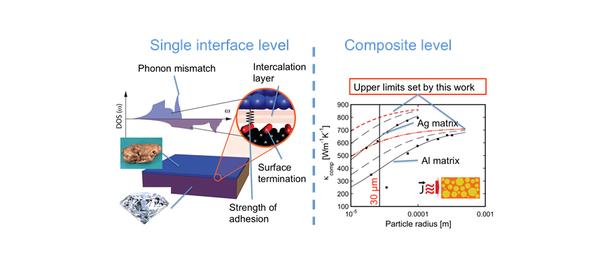Professor René Wasserman Award 2015 - Christian Monachon

© 2015 EPFL
Thermal Boundary Conductance between metals and dielectrics, EPFL thesis n° 5872 (2013)
Thesis directors: Prof. A. Mortensen, Dr L. Weber
“For his significant contribution to the understanding of heat transfer at metal/dielectric interfaces and particularly for giving experimental evidence for the importance of the stiffness of the chemical bond across the interface for better heat transfer, allowing him to propose and reduce to practice specific modifications of said interfaces to improve the coefficient of heat transfer between electronic and phononic heat conductors.”
This work originates in composite materials consisting of diamond powder embedded in a metallic matrix, developed for thermal management applications. These composites aim to blend the high formability of metals with the high thermal conductivity of diamond. Using large 300 µm-sized diamond, composites thermal conductivities close to 1000 W/mK are achieved.
Ensuring these composites’ machinability requires diamonds smaller than 30 µm. This decreases the composite’s thermal conductivity because each diamond/metal interface has a thermal resistance.
The work focuses on measuring the conductance of single interfaces using a technique called time domain thermoreflectance with the objective of finding engineering solutions to increase it.
By far the strongest factor for improving metal/diamond conductance is diamond cleanliness and surface chemical termination, which can improve the diamond/metal thermal boundary conductance by factors of 2 to 20 depending on the metal. The properties of the metal itself are also very important: there is a six-fold difference between clean silver/ and nickel/diamond interface conductance. Therefore, intercalating a nickel layer between silver and diamond can improve the technologically interesting diamond/silver interface conductance. The insights obtained were used to assess the ultimate performance limit of the composite materials, and were found to apply to other metal/dielectric combinations.